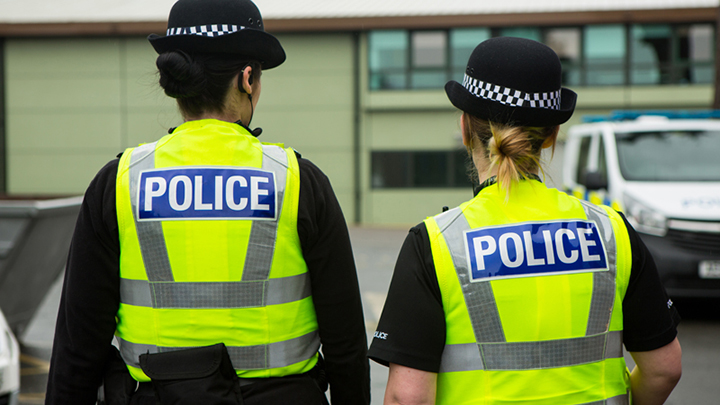A revolutionary ‘Fit-bit’-style bracelet which could help prevent custody deaths was unveiled in a world first at the Police Federation’s Post Incident Procedures Seminar today.
The equipment, which delivers vital health data in real-time, was showcased in a live demonstration of a police restraint scenario. Research scientists Detention Metrics have trialled the ‘ digital handcuffs’ within the NHS and some police forces are also conducting pilots.
It’s hoped it could eventually be rolled out nationwide to help diagnose a medical condition called Acute Behavioural Disturbance (ABD) by monitoring heart rates and oxygen saturation levels of detainees.
The conference heard from Forensic Medical Examiner and A&E specialist Dr Meng Aw-Yong about how ABD was a leading cause of custody deaths and should always be treated as a medical emergency.
But, he said: “While the police training and education around ABD is good, the difficulty can be in persuading ambulance crews and medics that they need to treat it as a medical emergency.”
The bracelets would not only detect a detainee’s deteriorating health sooner but also enable custody personnel to visibly evidence vital signs to 999 call centres and medical staff.
Custody deaths have risen over the past 12 months with detainees experiencing mental health crises and other vulnerabilities such as alcohol and drugs addictions being particularly at risk.
Dr Aw-Yong told delegates: “The equipment would provide a real-time measure of when restraint is a risk. Low oxygen saturation levels are potentially a killer.”
Lawyer Kevin Donoghue added: “For officers, failing to recognise this is not a criminal justice matter but a medical matter….officers need the support of the NHS and medical workers working alongside them to keep detainees safe.”
The national policing lead for Self Defence, Arrest and Restraint, DAC Matt Twist, told the seminar that anything which minimised the risks of restraint and increased learning from incidents was to be welcomed, saying: “Restraint is one of the most difficult and challenging areas for officers.”
But the ‘elephant in the room’, according to barrister Colin Banham, was the finger of blame always being pointed at the police when something went wrong whereas other agencies involved, for example the NHS or local authorities, ‘do not have an independent body like the IOPC breathing down their necks.’
He added: “To protect themselves, officers can help by passing on the information from the scene and communicating it to the control room…at the end of the day it’s about justification and the police officer’s honestly held belief at that time.”
Federation conduct lead Phill Matthews pointed to the training shortfalls in some forces: “There is a direct correlation between the number of training sessions offered and the number of complaints levelled against forces. We need to invest more in officer training.”
Police watchdog the Independent Office for Police Conduct is attending more joint training sessions with officers to try and better understand issues that are challenging for forces. Operations Manager Cath Hall said the organisation would also push for more training opportunities for officers.
Using Taser as a restraint measure also cropped up during debates, although the benefits had to be weighed up against the risks.
Dr Aw-Yong said: “With ABD there is a high risk of death already, so Taser can be an option because the risk of prolonged restraint also increases the likelihood of death. By swiftly incapacitating the struggling detainee, it then enables medics to get to that person more quickly to treat them. I suspect it would save lives if Taser was deployed earlier but only if medical personnel were standing by.
Mr Twist also added: “The use if any force has to be proportionate and there are a range of views about Taser. But if you took away all the emotion surrounding Taser, ignoring the fact it looks like a gun, then you could immediately incapacitate someone and then remove the need for some of the more risky methods of restraint.”
‘Fit-bit’ kit could save custody lives
16 October 2018













